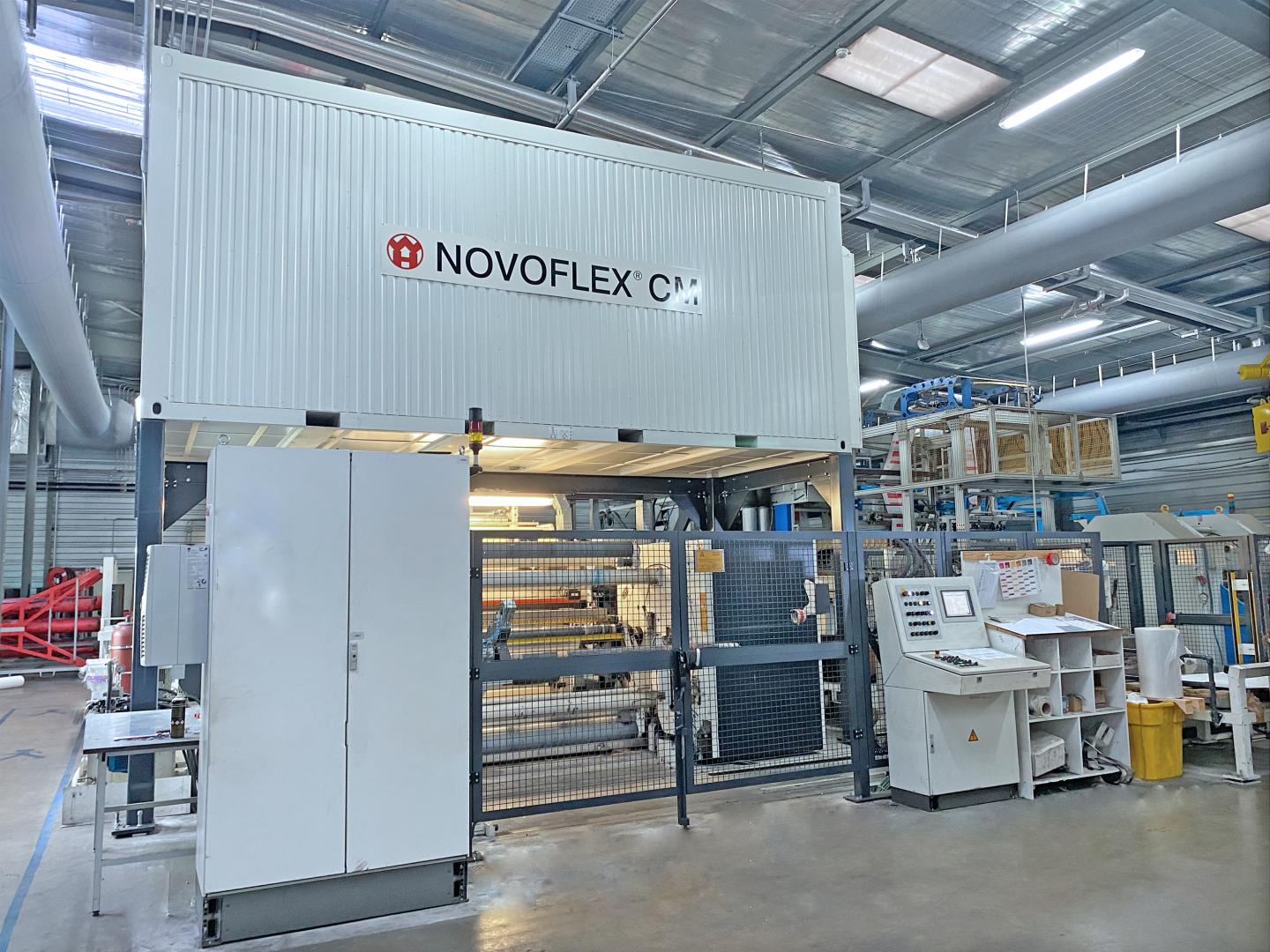Processing Company Expertise: Unlocking Performance in Manufacturing
Efficient Industrial Recycling Solutions for Lasting Packaging: A Comprehensive Guide
In today's progressively environmentally-conscious globe, the demand for sustainable product packaging remedies has actually never ever been higher. To satisfy this demand, organizations throughout sectors are actively seeking efficient industrial recycling options. Nonetheless, browsing the complicated landscape of lasting packaging can be challenging without an extensive overview. That's where this detailed overview on effective commercial recycling services for lasting product packaging is available in. By exploring vital locations such as product packaging material option, developing for recyclability, implementing reusing framework, collaborating with recycling companions, and tracking and gauging reusing success, this guide will outfit you with the understanding and tools required to make informed decisions and drive favorable modification within your organization. Whether you're a product packaging specialist, sustainability manager, or simply interested in the subject, this guide will offer important insights and approaches to assist you navigate the globe of lasting product packaging.
Product Packaging Product Option
The selection of product packaging products plays a critical role in making sure the sustainability of commercial reusing solutions. When it concerns sustainable packaging, the option of materials is vital in decreasing ecological influence and making the most of recycling effectiveness. Picking the appropriate products can help in reducing waste generation, save sources, and promote a circular economy.
Products like cardboard, paper, glass, and specific types of plastics can be recycled numerous times without losing their top quality. On the other hand, products that are challenging to recycle, such as non-recyclable composites or combined plastics, can create challenges for the recycling procedure and may finish up in incinerators or garbage dumps.
Another consideration is making use of eco-friendly and renewable products. Product packaging made from eco-friendly resources, such as plant-based plastics or biopolymers, can help in reducing dependence on nonrenewable fuel sources and minimize climate modification. In addition, biodegradable materials damage down naturally gradually, lowering the accumulation of waste in land fills.
In addition, the weight and quantity of product packaging products must be reduced to reduce transport prices and energy usage. Lightweight products not just need fewer resources throughout manufacturing however additionally contribute to decrease carbon emissions during transportation.
Designing for Recyclability
In order to make sure the recyclability of packaging materials, thoughtful design is necessary. Designing for recyclability includes producing product packaging that can be easily sorted, separated, and refined in reusing facilities. One vital facet of designing for recyclability is the choice of products. Product packaging designers must focus on the use of materials that are commonly approved for reusing and have actually established recycling infrastructures. Materials such as glass, aluminum, and specific sorts of plastic, like animal and HDPE, are typically recycled and must be liked over materials that are costly or difficult to recycle.
One more critical consideration in designing for recyclability is the elimination of unneeded elements or products. By reducing the number of layers, layers, and additional components, product packaging can be made simpler and easier to recycle. Furthermore, developers ought to aim to decrease using blended products, as they can make complex the reusing procedure.

Implementing Recycling Framework
Effective execution of reusing infrastructure is vital for the success of industrial reusing solutions. Without appropriate facilities in position, the reusing process comes to be ineffective and inadequate, preventing the overall goal of sustainable product packaging.
To apply recycling framework successfully, a number of key aspects require to be considered. To start with, there should be a well-organized collection system that facilitates the splitting up and collection of recyclable materials. This can consist of marked reusing bins in public rooms, along with partnerships with waste management companies for curbside pick-up and sorting.
When gathered, the recyclable products need to be carried to recycling facilities in a timely manner. This calls for reliable logistics and transportation networks, making certain that the materials reach the suitable centers immediately.
At the reusing facilities, advanced sorting and handling modern technologies must be in area to separate different sorts of products efficiently. This consists from this source of the use of automated arranging machines, optical scanners, and hand-operated sorting techniques.
Moreover, there ought to be a durable market demand for recycled materials. This can be attained with partnerships with suppliers and industries that make use of recycled materials in their manufacturing procedures. Creating a steady market for recycled materials incentivizes the recycling industry and advertises the circular economy.
Teaming Up With Recycling Partners

One trick facet of collaborating with recycling companions is the establishment of clear communication networks. It is necessary to establish open lines of interaction to assist in the exchange of details, updates, and feedback. This enables both parties to stay educated concerning the progress of reusing initiatives and resolve any type of difficulties or problems that might develop.
In addition, partnership can entail joint initiatives in designing and implementing recycling programs. Reusing companions can supply useful understandings and assistance in establishing efficient collection systems and establishing one of the most appropriate recycling modern technologies. By interacting, organizations and recycling partners can optimize the recycling procedure and decrease waste.
Moreover, collaboration can expand beyond the operational facets of recycling. It can likewise encompass advocacy and education and learning initiatives. By signing up with pressures, services and reusing partners can elevate understanding regarding the significance of recycling and promote the fostering of sustainable packaging practices amongst consumers and various other stakeholders.
Monitoring and Measuring Recycling Success
To ensure the efficiency of industrial recycling options and the achievement of lasting product packaging objectives, it is essential for businesses and their recycling partners to establish an extensive system for monitoring and gauging reusing success (industrial metal packaging). Tracking and gauging reusing success permits services to assess the impact of their reusing initiatives, determine locations for renovation, and set purposeful targets for future progression
One method to track recycling success is via the usage of information collection and evaluation devices. By gathering information on the quantity of packaging waste you could check here generated, the percentage of waste that is reused, and the kinds of materials being recycled, organizations can obtain valuable understandings right into their reusing efficiency. This information can after that be examined to determine trends, patterns, and locations of ineffectiveness.
One more vital facet of monitoring and determining reusing success is developing clear and standard metrics. This permits services to compare their performance against market criteria and track their progress with time. Metrics such as reusing prices, waste diversion rates, and greenhouse gas emissions can supply a quantitative step of a service's recycling success.

Verdict
In conclusion, implementing efficient commercial recycling options for sustainable packaging needs careful factor to consider of packaging material choice, developing for more information recyclability, executing recycling infrastructure, teaming up with recycling partners, and monitoring and measuring recycling success. By incorporating these techniques, companies can add to a more environmentally-friendly and lasting strategy to packaging, reducing waste and advertising the round economic situation.
By exploring vital locations such as product packaging product choice, developing for recyclability, applying recycling infrastructure, teaming up with reusing partners, and tracking and measuring reusing success, this overview will furnish you with the expertise and devices necessary to make enlightened choices and drive favorable adjustment within your organization. Packaging designers need to focus on the use of products that are extensively approved for reusing and have developed recycling infrastructures.Cooperation with recycling companions is important for the successful implementation of commercial recycling options and the success of sustainable packaging goals. By signing up with pressures, companies and recycling companions can increase recognition about the value of recycling and advertise the adoption of sustainable packaging techniques amongst customers and various other stakeholders.
By gathering information on the quantity of product packaging waste generated, the percent of waste that is recycled, and the kinds of products being recycled, services can acquire beneficial insights right into their recycling performance.